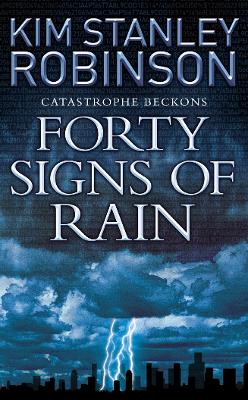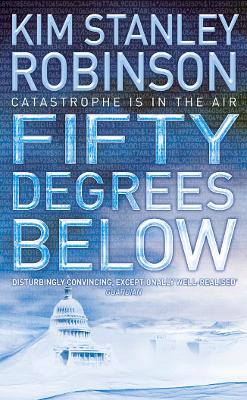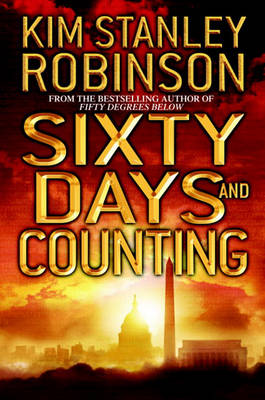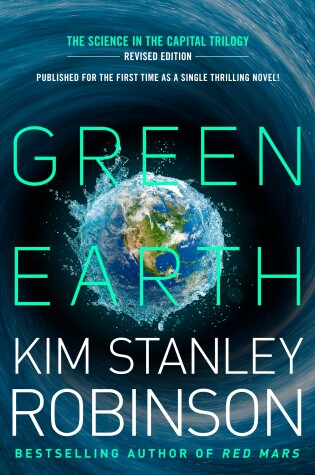Science in the Capital Trilogy
3 primary works • 4 total works Complete
Book 1
It's hot in Washington. No sign of rain. The world's climates are changing, catastrophe beckons, but no one in power is noticing. Yet. Tom Wolfe meets Michael Crichton in this highly topical, witty and entertaining science thriller.
When the Arctic ice pack was first measured in the 1950s, it averaged thirty feet thick in midwinter. By the end of the century it was down to fifteen. One August the ice broke. The next year the break-up started in July. The third year, it began in May.
That was last year.
It's an increasingly steamy summer in America's capital as environmental policy advisor Charlie Quibler cares for his young son, and deals with the frustrating politics of global warming. According to the President and his science advisor Dr S, the weather isn’t important! But Charlie must find a way to get a sceptical administration to act before it's too late – and his progeny find themselves living in Swamp World.
Just arrived in Washington to lobby the Senate for aid is an embassy from Khembalung, a sinking island nation in the Bay of Bengal. Charlie's wife Anna, director of bioinformatics at the National Science Foundation and well known for her hyperrational intensity, is entranced by the Khembalis. By contrast, her colleague, Frank Vanderwal, is equally cynical about the Buddhists and the NSF.
The profound effect the Khembali ambassador has on both Charlie and Frank could never have been predicted – unlike the abrupt, catastrophic climate change which is about to transform everything.
Forty Signs of Rain is an unforgettable tale of survival which captures a world where even the innocent pattern of rainfall resounds with the destiny of the biosphere.
Book 2
Kim Stanley Robinson is at his visionary best in this gripping cautionary tale of progress and its price as our world faces catastrophic climate change – the sequel to Forty Signs of Rain.
Frank Vanderwal of the National Science Foundation in Washington, DC has been living a paleolithic lifestyle in a tree house in Rock Creek Park ever since a big flood of the Potomac destroyed his apartment block. The flood was just the beginning. It heralded a lot of bad-weather news. Now the Gulf Stream has shut down and the Antarctic ice sheet is melting.
The good news is that Frank is part of an international effort by the National Science Foundation to restabilize Earth's climate. He understands the necessity for out-of-the-box thinking and he refuses to feel helpless before the indifference of the politicians and capitalists who run America.
The bad news is that Frank has fallen in love – with a woman who is not who she seems. He discovers that their first meeting was no accident: he was on a list all along! Her ulterior motive is political and she expects Frank to spy for her. And thus Frank is drawn into the world of Homeland Security, and other, blacker Washington security agencies as the presidential election year heats up.
Then suddenly it's winter …It's winter like the ice age, fifty degrees below. As hellish conditions disrupt the lives of even the most important people, there is a convergence of meteorological and human events with Frank at the centre – catastrophe is in the air. This unforgettable story from the master of alternate and future history brings tomorrow into new focus with startling effect.
Book 3
In his first sixty days, President Phil Chase intends to prove he can change the world. A highly topical, taut, witty and entertaining science thriller.
By the time Phil Chase is elected President of the United States, the world's climate is well on the way to irrevocable change. It could be that a mass extinction event is beginning. A lot of the big mammals - tigers, gorillas - may already be in their last moments. But now even the Pentagon agrees that climate change is a bigger threat than terrorism, Phil Chase has the trillion-dollar military budget to call on for the technologically sublime task of saving the world.
Frank Vanderwal, in the office of Presidential science advisor, finds something reassuring about the world being so messed up. It makes his own life look like part of a trend. He's been homeless for a year, the ex-husband of the love of his life did permanent injury to his nose - probably his brain - with a punch, and the love of his life has had to go into hiding from the secret service, which has Frank under surveillance, too ... but meanwhile there's the world to save. Frank's a scientist. He has to save the world so that science can proceed, obviously. This has become known as the Frank Principle.
China is close to meltdown, the security agencies are in overdrive, carbon figures are close to cooking the world ... and the team has sixty days to establish a new reality.
More than a decade ago, bestselling author Kim Stanley Robinson began a groundbreaking series of near-future eco-thrillers—Forty Signs of Rain, Fifty Degrees Below, and Sixty Days and Counting—that grew increasingly urgent and vital as global warming continued unchecked. Now, condensed into one volume and updated with the latest research, this sweeping trilogy gains new life as Green Earth, a chillingly realistic novel that plunges readers into great floods, a modern Ice Age, and the political fight for all our lives.
The Arctic ice pack averaged thirty feet thick in midwinter when it was first measured in the 1950s. By the end of the century it was down to fifteen. One August the ice broke. The next year the breakup started in July. The third year it began in May. That was last year.
It’s a muggy summer in Washington, D.C., as Senate environmental staffer Charlie Quibler and his scientist wife, Anna, work to call attention to the growing crisis of global warming. But as they fight to align the extraordinary march of modern technology with the awesome forces of nature, fate puts an unusual twist on their efforts—one that will pit science against politics in the heart of the coming storm.
Praise for the Science in the Capital trilogy
“Perhaps it’s no coincidence that one of our most visionary hard sci-fi writers is also a profoundly good nature writer—all the better to tell us what it is we have to lose.”—Los Angeles Times
“An unforgettable demonstration of what can go wrong when an ecological balance is upset.”—The New York Times Book Review
“Absorbing and convincing.”—Nature



